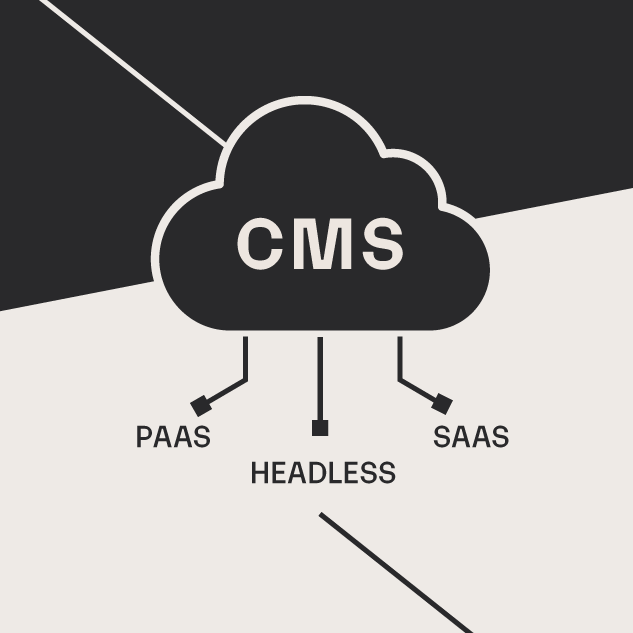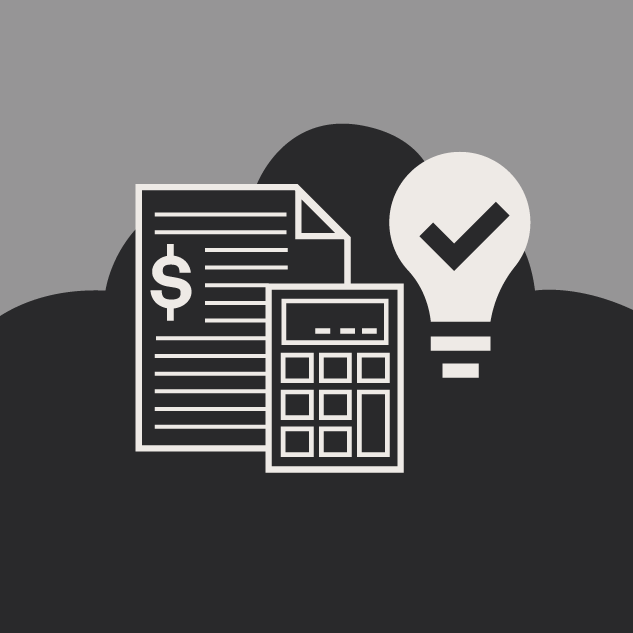Choosing the Right Cloud CMS: Key Factors to Consider
Chris Osterhout SVP of Strategy#CMS, #Digital Strategy

In a rapidly evolving digital landscape, selecting the right cloud-based Content Management System (CMS) demands a careful balance between budget, technical expertise, and business needs.
Navigating through the endless amount of cloud-based Content Management System (CMS) options can feel like a daunting task, especially in today's rapidly changing digital environment. The world of cloud CMS is diverse, encompassing traditional Software as a Service (SaaS) solutions, innovative Headless CMS platforms, and other hybrid models, each presenting its unique set of features and complexities. This overwhelming variety makes it crucial for businesses, aiming to solidify their online presence, to carefully consider and understand the distinct offerings and implications of each type. Selecting the right cloud CMS involves more than just enhancing content management and collaboration; it's about finding the perfect balance of flexibility, scalability, and functionality that aligns seamlessly with your specific business needs and goals.
Aligning Cloud CMS Selection with Budget Realities
A pivotal aspect of selecting the right cloud CMS revolves around a truthful understanding of your organization's willingness and capacity to invest in such technology. This step begins with defining your budget constraints clearly. For instance, if your organization is prepared to invest upwards of 100K annually in software licensing for a CMS, your options will significantly differ in features, scalability, and support compared to a more modest budget of, say, 30K a year. This financial clarity not only narrows down your choices to those within your financial reach but also aligns expectations with the reality of the functionalities and advanced features you can afford. Whether it's a high-end, feature-rich platform or a more cost-effective solution, understanding your budgetary limits from the outset is essential in choosing a CMS that fits your financial framework while meeting your organizational needs.
Navigating the Pitfall of Feature Shopping in Cloud CMS Selection
In the process of choosing the right cloud CMS, a common misstep for many organizations is to focus predominantly on feature shopping, often leading to the selection of platforms with advanced capabilities like personalization and A/B testing, which they are not yet ready to fully utilize. This approach can result in investing in a sophisticated, high-cost CMS that may not yield immediate return on investment (ROI) and may overwhelm the team with its complexity.
Instead, a more strategic approach is to honestly evaluate your organization's readiness to effectively manage and employ these advanced tools. Start by assessing if your team has the necessary skills and resources. Consider opting for a cloud CMS that offers composability, allowing you to start with essential features and gradually unlock advanced functionalities as your team's proficiency grows. This method ensures a more pragmatic investment in a CMS that aligns with your current capabilities and future growth, avoiding the trap of overbuying and underutilizing expensive software.
Balancing SaaS and PaaS with the Technical Demands of Headless CMS
In choosing the right cloud CMS, it's important to consider the different levels of flexibility and technical expertise required by various platforms.
- SaaS platforms typically offer ease of use and quick deployment but may lack extensive customization capabilities.
- Platform as a Service (PaaS) allows for more tailored end solutions but often demands greater technical skill.
- Headless CMS platforms bridge this gap, offering the flexibility of PaaS with the user-friendliness of SaaS. However, it's important to note that while a headless CMS provides this balance, it also requires a fair amount of technical expertise to architect and build effectively. The headless approach separates the back-end content management from the front-end presentation layer, necessitating skilled development teams to implement and maintain the system properly. This makes it an ideal choice for organizations that have the technical resources to leverage its adaptability fully, ensuring they can exploit its benefits while managing its more complex architecture.
Inevitably, the right choice will depend on where your organization falls on this spectrum of technical expertise and specific needs, ensuring a CMS solution that not only meets your current requirements but also supports your future growth and digital strategy.
Harmonizing Cloud CMS with Business-Critical Systems
When it comes to selecting a cloud-based CMS, seamless integration with your technology stack can significantly enhance efficiency and data consistency across your business operations. It's essential to understand the level of integration required for your specific needs. This understanding will help you determine what integrations are available out-of-the-box with the cloud CMS, versus those that will necessitate additional development work or additional software licensing. Some complex systems, like Enterprise Resource Planning (ERP), might even require new modules or significant adaptations to ensure compatibility and functionality with the CMS's Application Programming Interface (API). Therefore, while assessing potential cloud CMS options, pay close attention to their integration capabilities and compatibility with your existing technology stack. This scrutiny will not only streamline your workflow but also potentially save considerable time and resources in custom development and additional software investments.
Assessing Real Security Requirements for Your Cloud CMS
Often, companies incorporate various stringent security standards for their public websites that may not be necessary. For instance, if your website does not handle credit card transactions, payment card industry (PCI) compliance may not be a requisite. Similarly, unless you are in the healthcare sector, HIPAA compliance might not be a concern. However, it's important to consider existing business relationships and agreements that your enterprise might have in place. For example, if your organization already has a Business Associate Agreement (BAA) with major cloud service providers like Microsoft or Amazon, this should be a significant factor in your decision-making process. Opting for a cloud CMS that is built on a platform like Microsoft Azure, if you already have a BAA with Microsoft, could offer streamlined integration and assurance in terms of compliance and security standards. Such considerations not only ensure that your chosen CMS aligns with your security needs but also leverages existing agreements for optimal efficiency and peace of mind.
Evaluating Performance, Scalability, and Security in Cloud CMS Selection
When it comes to cloud CMS selection, it is important to focus on performance, scalability, and security. Cloud CMS platforms will check most security checkboxes, but many providers employ advanced features that you may need more information on.
- Content Delivery Networks (CDNs) - Many cloud CMS providers employ CDNs to handle SSLs and the caching of assets efficiently, but it’s important to inquire about page-level caching capabilities, which can significantly impact load times and user experience.
- Web Application Firewall (WAF) – Understanding what level of access your organization needs to the WAF and what level of access is provided as part of your cloud CMS package is crucial for maintaining robust security protocols.
- Autoscaling - When considering scalability, it’s important to assess how the CMS copes with spikes in traffic, for example, does the provider offer solutions for application scaling to ensure uninterrupted service during peak times?
Lastly, scrutinize the Service Level Agreement (SLA) offered by the cloud CMS vendor. It's important to understand whether the SLA covers just the application and hosting setup, or if it extends to the performance of your website itself.
Assessing Support Needs
Support is one of the most overlooked areas when selecting a cloud CMS, but it's important to understand the support options included within each package. The following are key things to consider:
- Support Channels - The ways you can access support can vary significantly between providers – some offer chat, email, and/or ticket-based systems.
- Location of Support Team - Knowing where the support team is located is also important, as this can affect response times and availability, especially if you require assistance outside of standard business hours.
- Support Service Level Agreement (SLA) - Inquiring whether the support is available 24/7/365 and understanding the SLA for support response times will help you gauge how quickly you can expect issues to be addressed.
- Type of Support Offered - It's also beneficial to clarify what types of issues the support team handles. Some providers might offer comprehensive support for a range of issues, while others may limit their support to specific technical problems.
These support-related considerations are key in ensuring that the CMS you choose can provide the timely and effective assistance your organization may need.
Conclusion
Selecting the right cloud-based CMS involves more than just technical aspects; it requires a thorough assessment of your organization's needs, budget, technical skills, integration capabilities, and security demands. Understanding the nuances of SaaS, PaaS, and headless CMS, and how they match your team's abilities is key. It's crucial to migrate to a cloud CMS that not only fits your current operational framework and budget but also scales effectively with your business. The ideal choice should enhance your online presence while also promoting organizational efficiency, security, and growth.
Related Articles
Results Matter.
We design creative digital solutions that grow your business, strengthen your brand and engage your audience. Our team blends creativity with insights, analytics and technology to deliver beauty, function, accessibility and most of all, ROI. Do you have a project you want to discuss?
Like what you read?
Subscribe to our blog "Diagram Views" for the latest trends in web design, inbound marketing and mobile strategy.



